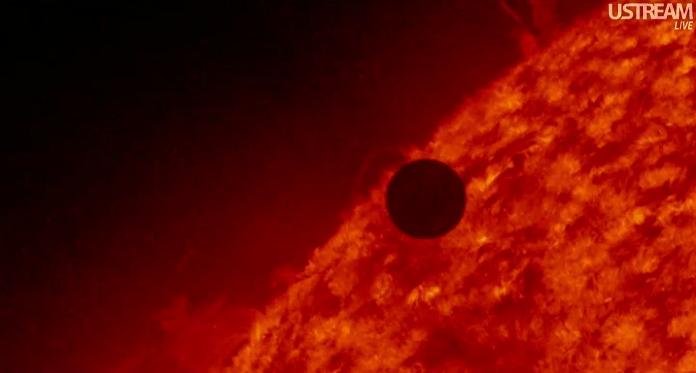Venus Transit makes last appearance for 100 years
Venus passes the sun during the Venus Transit on Tuesday, June 5, 2012.
June 5, 2012
For those fortunate enough to be outside when the sun broke through the clouds on Tuesday, the 2012 Venus Transit was a sight to see.
Beginning at 5 p.m., a small, spherical silhouette became slowly visible as it crept its way in front of the sun.
With the adequate eye protection needed to prevent vision damage, spectators of the event who were lucky to have dodged overcast skies saw Venus move in between the Earth and the Sun. Not occurring in our lifetime ever again, the “rare” Venus Transit will make its next appearance in December 2117.
A transit such as this one has a pattern that puts the use of the word rare into an odd light, so to speak. The previous Venus Transit actually occurred back in 2004, which begs the question: Why is the next one not going to occur for another 105 years? It all has to do with our solar system’s unique orbits and how they coincide with each other every so often.
Remaining a consistent fact since the transit was first discovered, it’s been known that the appearance pattern is quite unusual. A transit will occur one year, and another will occur eight years later. However, the next one will not appear until more than 100 years down the road. That transit is then followed by another one eight years later, and the cycle continues in 100, eight, 100, 8-year intervals.
Though the event could not be witnessed first-hand by civilians after sunset, numerous live-streams on the Internet were set up that let viewers see a real-time feed of the transit, accompanied by a live commentary discussion led by astronomers from around the world. Internet viewers could switch telescope views whenever they wished, cycling through locations from New Zealand to Australia to Arizona, among others.
Despite a cloudy day for some people, witnesses all over the world viewed a happening that truly shows both the randomness and preciseness of the universe.







